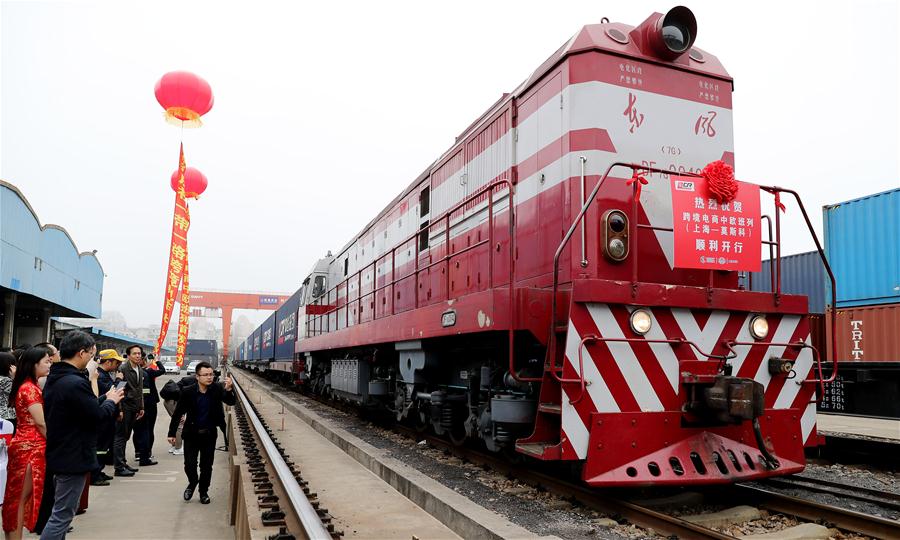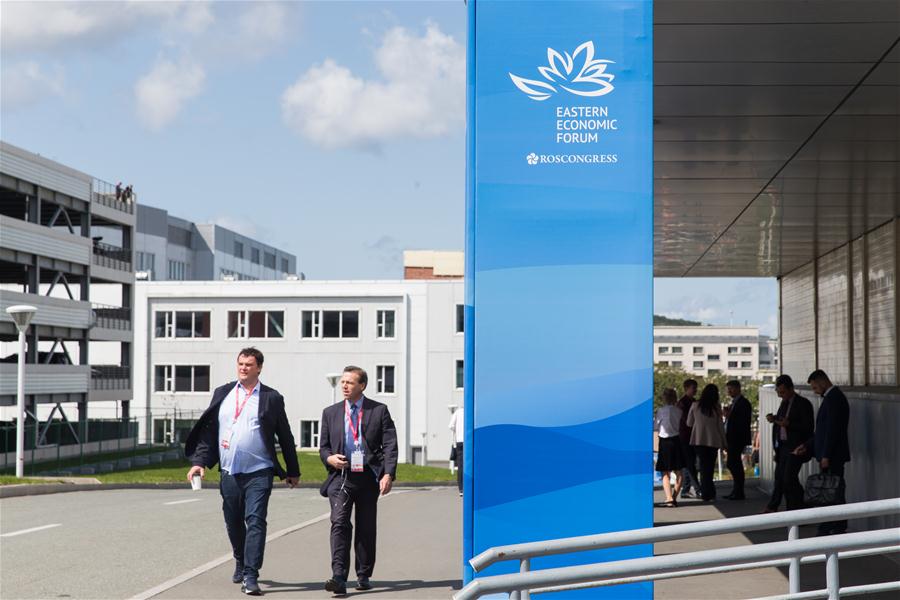Russia's Far East, a land with huge potential for regional growth
Russia's Far East has been witnessing an infrastructure building boom as the region is seeking investment and cooperation in local development.
Russia's Far East has been witnessing an infrastructure building boom as the region is seeking investment and cooperation in local development. Many new roads and bridges are being built in border areas next to Northeast China.
As part of it, two cross-border bridges to be completed in 2019 will link China's Heilongjiang Province with Russia's Jewish Autonomous Oblast and Amur region, while two international transport corridors are under construction in the Primorsky Territory.
The new roads and bridges are expected to play a much larger role as the Russian Far East is emerging as a land with huge potential to tap for boosting the economic growth in Northeast Asia.
In support of a bright prospect for regional growth, the Polar Silk Road is gradually taking shape. It is expected to open a new trade route leading to Nordic countries.

A departure ceremony of China-Europe freight train service for cross-border e-commerce is held at Yangpu Station in Shanghai, east China, March 30, 2018. [Photo/Xinhua]
China is natural partner in Far East
For Russia's Far East, its next-door neighbor China, which is the world's second largest economy, is a natural partner in its development efforts. As a top priority on Russia's development agenda, the region also benefits from the cooperation projects within the framework of the China-proposed Belt and Road Initiative (BRI).
Alexander Galushka, Russia's minister for the development of the Far East, has said Russia and China have shared interests in the region's development.
"The Russian Far East is adjacent to China's northeastern provinces, but has limited land transportation infrastructure. More overland cross-border infrastructure is required to make full use of the geographic advantages in commerce and trade between the two areas," the minister said.
In fact, China has become the Russian Far East's biggest investment source. Primorsky's capital and port Vladivostok is now home to many Chinese enterprises.
In particular, China's northeastern provinces, known as the "rust belt," are too looking to bilateral cooperation in securing easy access to seaports and reviving their economies.
Agriculture and transborder logistics are currently the two leading sectors in China-Russia cooperation in the Far East.
In 2017, China's largest food trade company COFCO opened a branch there. Focusing on big deals in the grain trade, the company has also showed interest in agricultural product processing and local food exporting.
"We are starting the business on soy beans and corns this autumn, and will deal with barley, rape in the future. The company plans to build a grain warehousing logistics system in Russia in the next three to five years," said Bai Tianxu, head of COFCO's Far East branch.
Chen Gang, head of the Russian office of China's logistics company STO Express, said his company will build warehouses for China-Russia e-commerce in a designated zone for transborder development in Primorsky, or an intended logistics base open for regional countries including China, Japan and South Korea.
Regarding international cooperation in the Russian Far East's development, China is now taking the lead and China-Russia cooperation is expected to serve as an example for newcomers to follow.

Photo taken on Aug. 20, 2018 shows the outdoor scene of Tian En vessel of China's COSCO Shipping Specialized Carriers Co., Ltd. during its journey among floating ices through the "Polar Silk Road". [Photo/Xinhua]
Strong support from Polar Silk Road for regional growth
Last week, the Chinese cargo ship Tian'en arrived at the northwestern French port Rouen after its month-long maiden voyage to Europe along the Polar Silk Road.
Regarded as the third arch of the Belt and Road aimed at common prosperity, the Polar Silk Road refers to the Northern Sea Route between the Pacific and the Atlantic through the Arctic. In 2017, Russia and China agreed to jointly build it.
The transoceanic trade route will remarkably shorten the sea voyage from Northeast Asia to Europe with lower cost, less emissions and no limits to ship size.
Building the Polar Silk Road is expected to promote port development along the Arctic coastline and unleash the economic vitality of the hinterland of Northeast Asia.
Such a prospect for regional growth has drawn widespread attention. For example, South Korea's New Northern Policy and its related strategies have listed the Northern Sea Route as its priority areas for cooperation with Russia.
In Europe, Nordic countries in particular welcome the Polar Silk Road, which supports the vision included in a growth plan proposed by them. They plan to invest at least 3 billion euros (3.5 billion U.S. dollars) in building a rail road from Europe's hinterland, via Finland's capital Helsinki, to meet the Polar Silk Road at Norway's northeastern port of Kirkenes.

People walk past a sign of the Eastern Economic Forum in Vladivostok, Russia, on Sept. 11, 2018. [Photo/Xinhua]
Political will to strengthen regional cooperation
As part of its efforts to develop the Far East region, Russia launched the annual Eastern Economic Forum (EEF) in 2015 and has made it a platform for seeking regional growth in Northeast Asia.
The fourth EEF held in Vladivostok on Sept. 11-13 this year, with the theme of "The Far East: Expanding the Range of Possibilities," called for increased cooperation to boost regional growth.
While addressing the plenary session of the forum on Wednesday, Chinese President Xi Jinping urged the six Northeast Asian countries -- China, the Democratic People's Republic of Korea (DPRK), Japan, Mongolia, Russia and South Korea -- to "join hands and strengthen cooperation to promote peace, stability, development and prosperity in the region."
He said that the six countries account for 23 percent of the global population, and 19 percent of the global gross domestic product.
Xi called on them to align their development strategies, strengthen policy communication and coordination, improve cross-border infrastructure connectivity, promote trade and investment liberalization and facilitation, jointly build an open regional economy, and boost sub-regional cooperation to benefit the people in the region.
Russian President Vladimir Putin agreed with the Chinese president.
"We are working hard to create a strong center of international cooperation and integration, business and investment activity, education, science and culture in the dynamically growing Asia-Pacific region," said Putin.
The forum has attracted thousands of attendees, including government officials and business tycoons, from more than 60 countries.
During the forum, China's Alibaba and three Russian companies announced a new strategic partnership to set up a social commerce joint venture, which will enable Russian customers and small and medium-sized enterprises to benefit from the economic cooperation in the region.

